Solar power has become an essential part of van life and RV living, providing a reliable, renewable, and cost-effective energy solution for those who want to travel off-grid. Whether you’re a weekend camper, a part-time traveler, or a full-time van lifer, a properly designed solar setup can keep your appliances running, your devices charged, and your experience hassle-free.
This guide will walk you through the best solar power setups for different needs, helping you understand components, installation, and maintenance for a smooth, off-grid experience.
1. Why Choose Solar Power for Van Life & RV Living?
Many travelers choose solar energy because it offers energy independence, allowing them to camp anywhere without relying on electrical hookups. Here’s why solar power is a game-changer for van life and RVers:
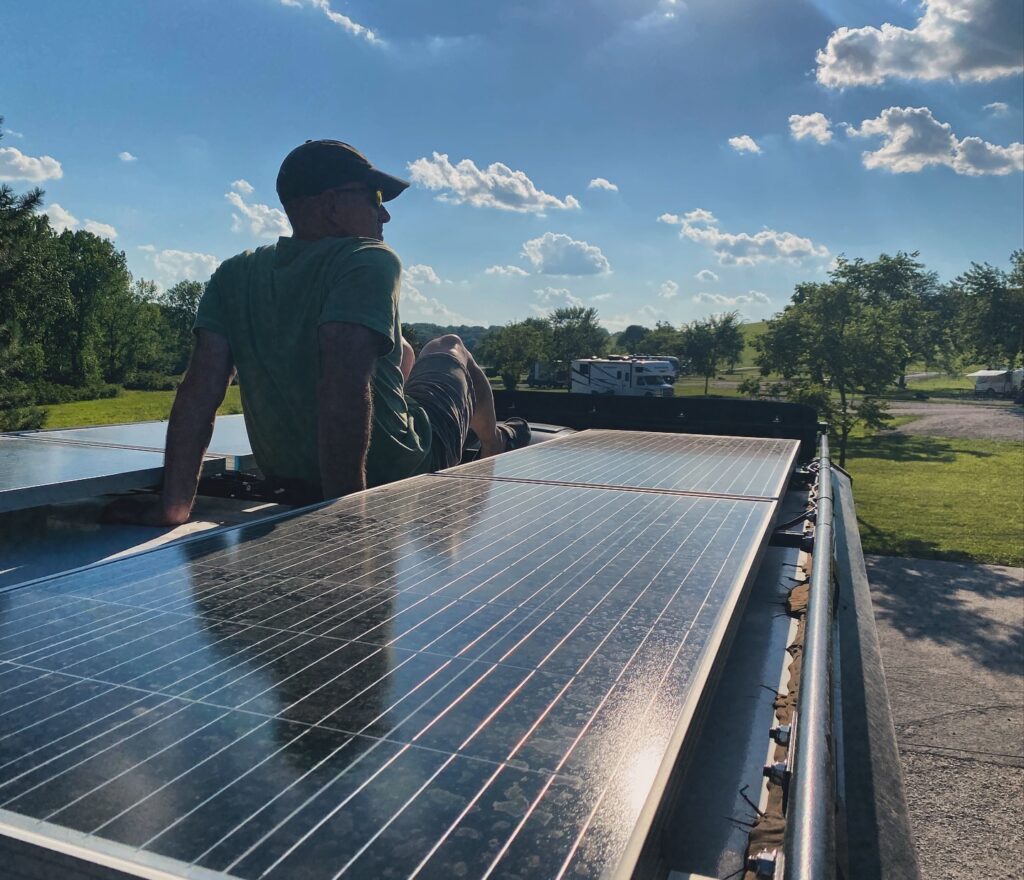
- Freedom to camp off-grid without limitations
- Quiet power generation compared to noisy generators
- Sustainable and renewable energy source, reducing carbon footprint
- Long-term cost savings by eliminating campground electricity fees
- Minimal maintenance once installed
If you want to stay off-grid longer and travel anywhere without worry, solar power is a must-have for your van or RV.
2. Understanding the Basics of Solar Power for RVs & Vans
Before choosing a solar power system, it’s important to understand the essential components:
A. Solar Panels
Solar panels convert sunlight into electricity. There are three main types:
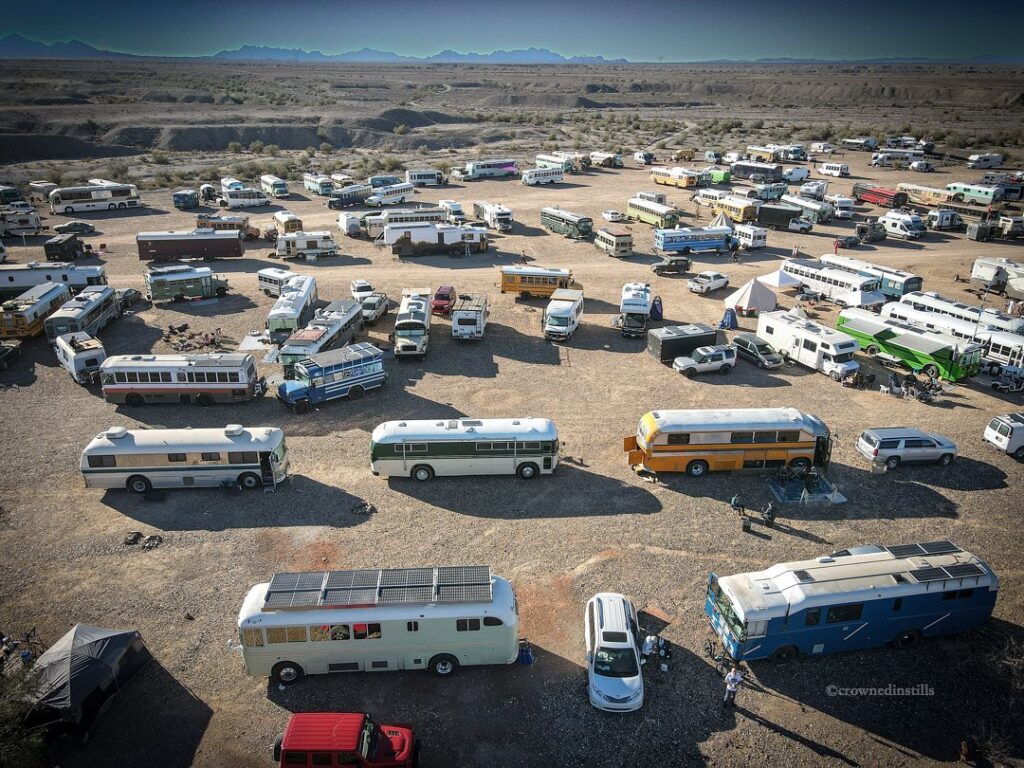
- Monocrystalline Panels – Highly efficient, durable, and ideal for compact spaces
- Polycrystalline Panels – More affordable but slightly less efficient
- Flexible Panels – Lightweight and bendable, perfect for curved van roofs
B. Charge Controller
A charge controller regulates power from the solar panels into the battery to prevent overcharging.
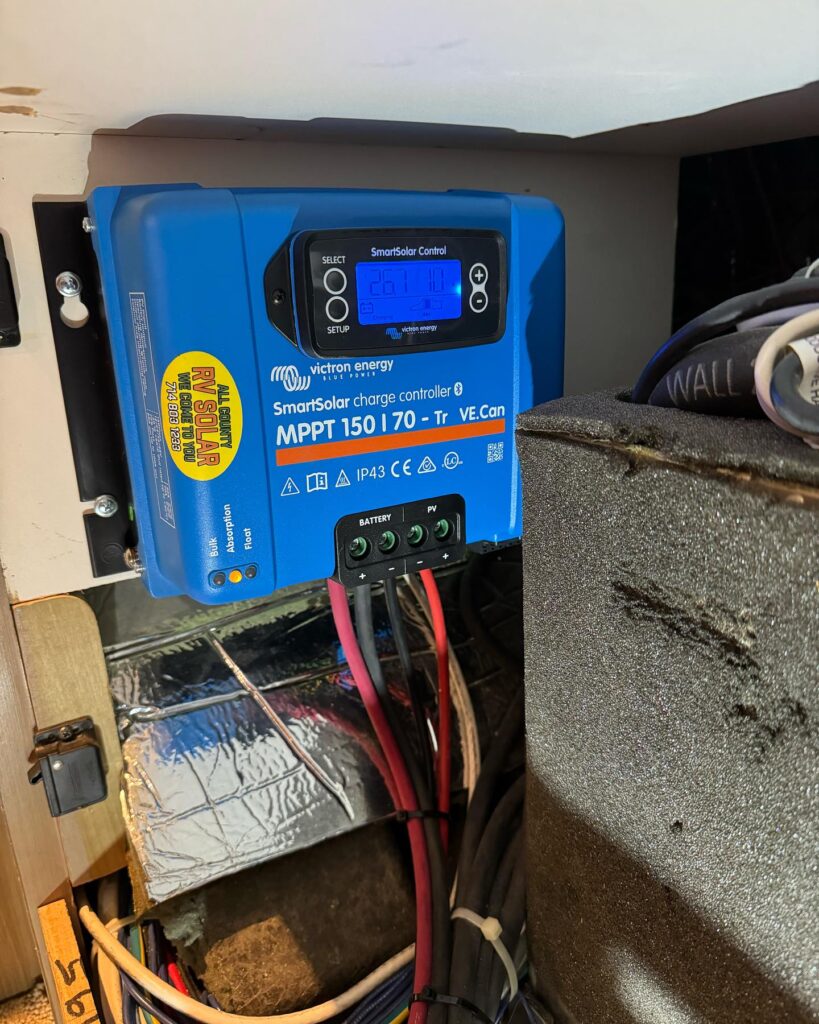
- MPPT (Maximum Power Point Tracking) – More efficient, best for larger setups
- PWM (Pulse Width Modulation) – Budget-friendly, works for smaller setups
C. Batteries
Solar panels do not store power; instead, energy is stored in batteries for use when the sun isn’t shining.

- Lithium (LiFePO4) Batteries – Lightweight, long lifespan, charges fast
- AGM Deep Cycle Batteries – Budget-friendly but heavier and shorter lifespan
- Lead-Acid Batteries – The cheapest option but requires maintenance
D. Inverter
An inverter converts stored DC power (battery power) into AC power, so you can use household appliances like laptops, microwaves, and blenders.
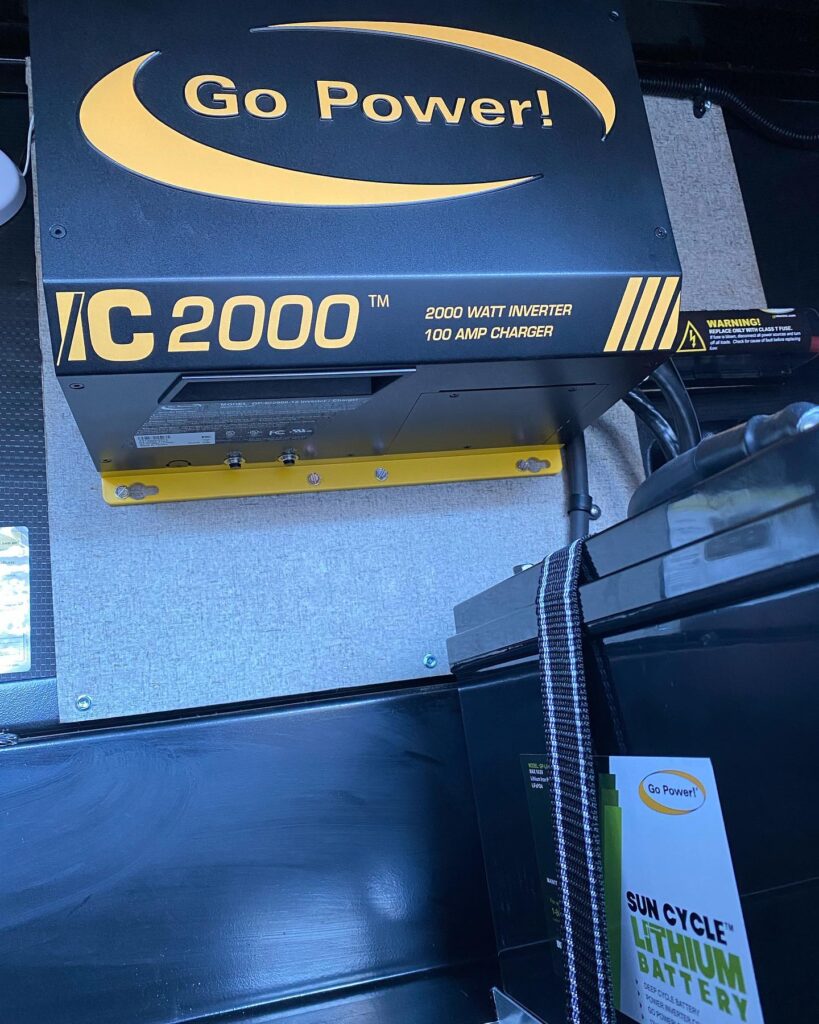
- Pure Sine Wave Inverter – Best for sensitive electronics
- Modified Sine Wave Inverter – Cheaper but not ideal for all devices
3. Best Solar Power Setups for Van Life & RV Living
Your solar setup depends on how much power you need. Below are three recommended setups based on different power requirements.
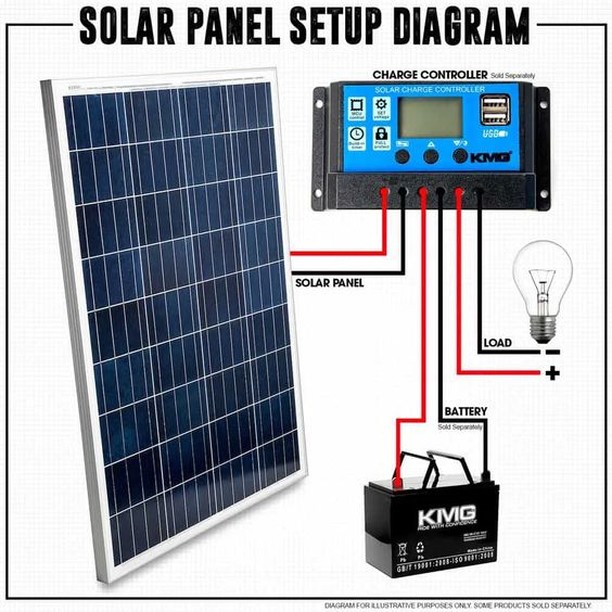
A. Budget-Friendly Solar Setup (100W – 200W) – For Weekend Travelers
If you’re using minimal electricity, such as charging phones, using LED lights, and running a fan, a 100W–200W setup is a great start.
Recommended Setup:
- 100W–200W monocrystalline solar panel
- 10A–20A PWM charge controller
- 100Ah AGM deep-cycle battery
- 300W inverter
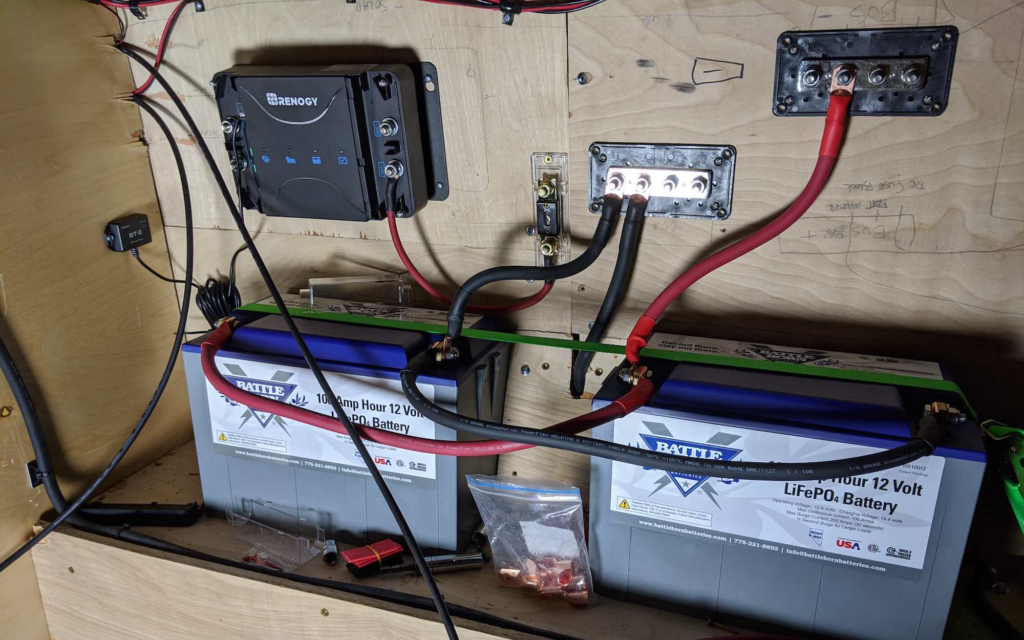
Best for weekend warriors and casual campers.
Estimated Cost: $600–$1000
B. Mid-Range Solar Setup (400W – 600W) – For Part-Time RVers & Van Lifers
If you need power for a fridge, lights, laptop, and a small water pump, this setup is ideal.
Recommended Setup:
- 400W–600W solar panels
- 40A MPPT charge controller
- 200Ah lithium battery (LiFePO4 preferred)
- 1,000W–1,500W pure sine wave inverter

Best for digital nomads and extended travelers.
Estimated Cost: $1,000–$2,500
C. Full-Time Off-Grid Solar Setup (800W – 1,200W) – For Full-Time RVers & Van Dwellers
If you live in your van or RV full-time and need enough power for a fridge, lights, laptop, water pump, and even an AC unit, this setup will keep you completely off-grid.
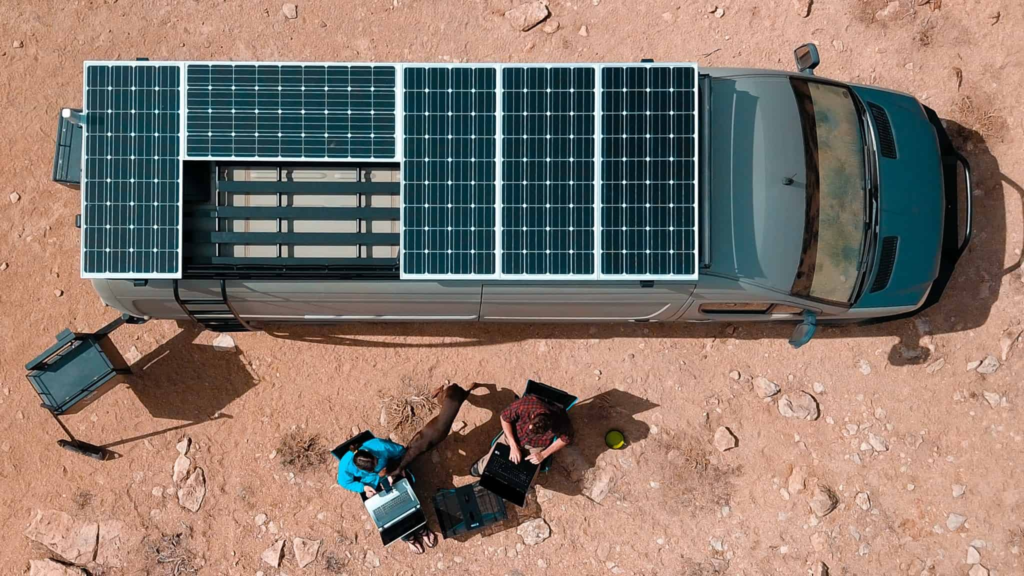
Recommended Setup:
- 800W–1,200W solar panels
- 60A–80A MPPT charge controller
- 400Ah-600Ah lithium battery bank
- 2,000W–3,000W pure sine wave inverter
Best for full-time van lifers and off-grid RVers.
Estimated Cost: $3,000–$6,000
4. Portable vs. Roof-Mounted Solar Panels: Which is Better?
Portable Solar Panels
- Great for temporary use and easy repositioning
- Can be moved to follow the sun’s path
- Ideal for part-time campers
Roof-Mounted Solar Panels
- Provides hands-free charging while driving
- More secure and weather-resistant
- Best for full-time RVers
Best Choice: Portable panels are better for weekend and part-time campers, while roof-mounted panels are ideal for full-time off-grid travelers.
5. Solar Accessories & Must-Have Gadgets
Enhance your solar setup with these essential add-ons:
- Battery monitor to track charge levels and power usage
- Solar generator (Jackery, Bluetti, EcoFlow) for backup power
- DC-DC charger to charge your battery while driving
- Solar panel tilt brackets to maximize sun exposure
6. Installation & Maintenance Tips
Installation Tips:
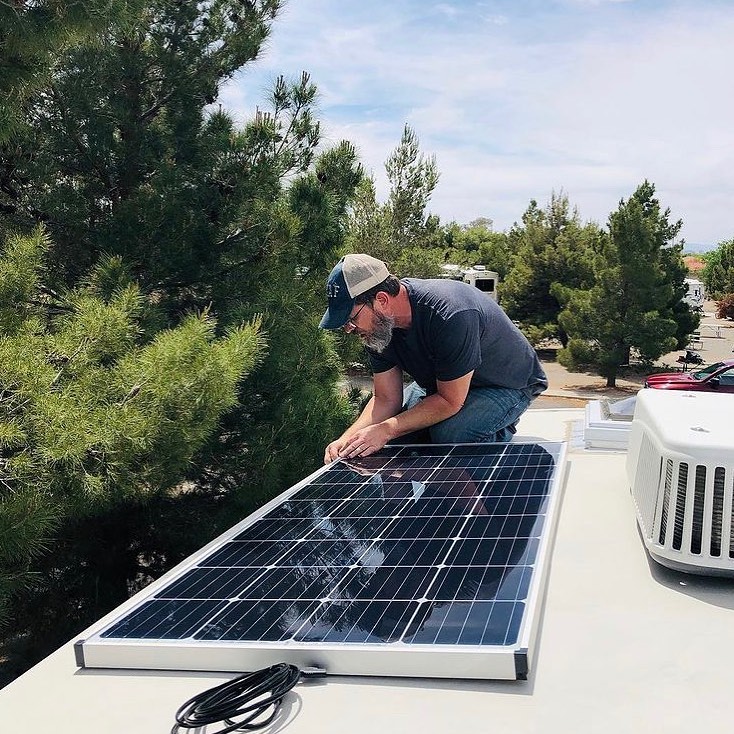
- Secure panels with brackets or industrial-strength adhesive
- Install panels at an angle for maximum sunlight absorption
- Use thick, high-quality wiring to prevent power loss
Maintenance Tips:
- Clean solar panels regularly to remove dirt and debris
- Check battery health every few months
- Monitor wiring connections for wear and tear
7. Is a Solar Power Setup Worth It for RV and Van Life?
- Saves money by eliminating campground electric fees
- Provides freedom to boondock anywhere without relying on shore power
- Eco-friendly and reduces carbon footprint and fuel dependency
- Silent power compared to generators
Investing in solar power ensures energy independence, sustainable travel, and a comfortable, off-grid lifestyle.
Final Thoughts: Power Your Adventures with Solar Energy
Whether you’re a weekend camper, part-time traveler, or full-time nomad, the right solar setup will keep you powered, connected, and self-sufficient.
Which solar setup works best for you? Let us know in the comments.